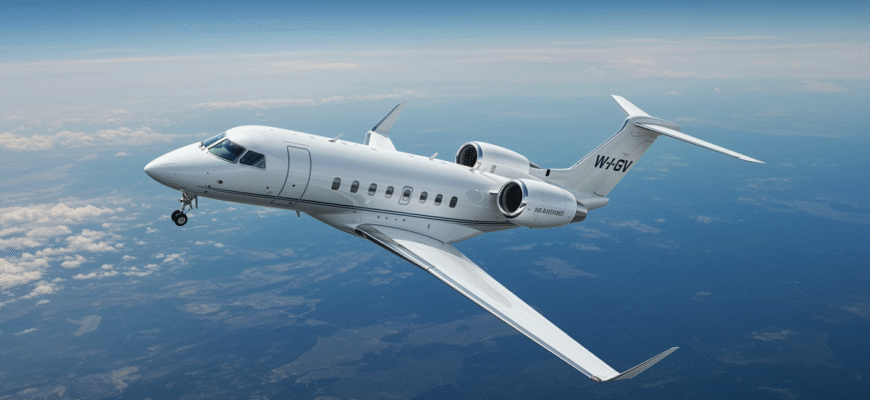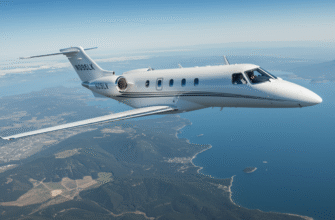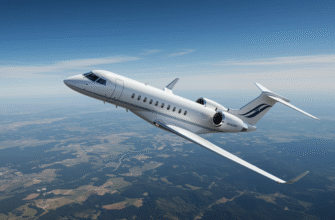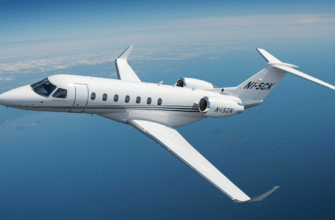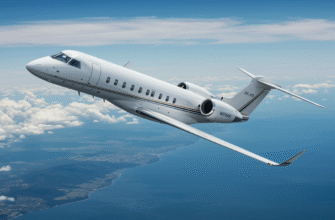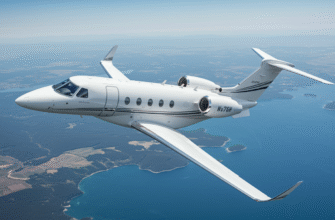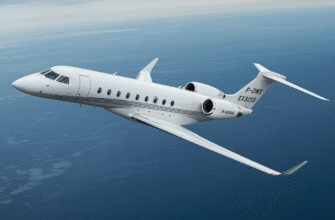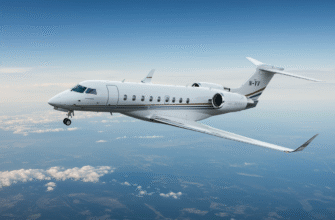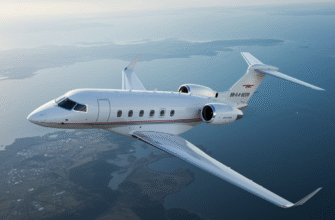What makes someone fall hard for a jet? It’s usually not just top-line speed or a long file of numbers in a spec sheet. It’s the way a plane stands its ground in a world full of flash. The Bombardier Challenger 605 is exactly that kind of jet. It’s not trying to be extreme—it’s built to be dependable, comfortable, and quietly luxurious. Sitting comfortably in the “large cabin private jet” category, it’s the kind of aircraft execs, celebrities, and high-mile charter clients actually use, not just talk about.
The Challenger 605 hit the runway in 2006 as an evolution of the Challenger 604—and it’s still one of the most recurring names in private aircraft ownership and charter circles. Here’s why: it seats up to 13 but lives best with 9. It crosses oceans like it’s cruising I-95, with a range just over 4,100 nautical miles. And with an average cruise speed around 459 knots, it refuses to waste anyone’s time.
What Makes The Bombardier Challenger 605 A Private Jet Favorite
The private jet world is flooded with choices, but only a handful offer the same cross-Atlantic comfort and reputation as the Challenger 605. It’s not ultralight or made to land on little backyard airstrips. Instead, it’s a business-class beast with long legs and a big heart—perfect for anyone who clocks real miles up in the sky.
Who’s flying it?
- Corporate heads needing boardrooms in the clouds.
- Celebs and musicians chasing tour stops across continents.
- Charter flyers stacking value per hour with a big enough cabin to double as a mobile HQ or VIP lounge.
With a bold combo of 4,123 nm max range and a 41,000 ft cruising ceiling, it closes gaps between continents fast. Throw in twin General Electric CF34 engines and a smartly spacious layout, and this jet doesn’t just fly—it works overtime to deliver both comfort and consistency. And despite sharing an airframe with its sibling, the Challenger 604, owners know that once you’ve flown with this updated avionics and improved tail design, it’s a world apart.
The Flying Penthouse: Cabin Space, Comfort & Interior Vibe
Step into the Challenger 605 and you forget you’re 40,000 feet up. There’s 6 feet of headroom and over 7 feet of width from wall to wall, making it wide enough for opposing club seats or a three-person divan—without ever brushing knees.
Inside, everything shifts based on how you fly. Want an airborne boardroom? Seats swivel and table up. Need nap space during red-eyes across the Atlantic? Lie-flat options and divans rival hotel beds when used right. Even pets ride in peace, especially since some configurations allow for travel crates or custom mats to keep four-legged friends calm and secure.
The tailcone redesign? Quietly brilliant. By reimagining storage around the tail, Bombardier created a sound buffer between you and the thunder behind the wall. It adds a layer of privacy that isn’t flashy—but feels like a big deal when you’re in the back trying to make a business call or sneak in sleep.
Sound-proofing matters more than you’d think. The Challenger 605’s upgraded insulation blocks out more than engine roar—it filters fatigue. Conversations stay low and clear, and the constant hum that plagues older jets never fully gets through. It’s the kind of quiet people don’t notice until they get off—and realize how refreshed they feel.
What It’s Like To Fly In A Challenger 605
At 41,000 feet, the Challenger 605 doesn’t just look good on paper—it delivers. Passengers talk about the ease of moving around, the comfort of its leather seats even on long-hauls, and how the cabin feels more like a hotel suite than a tube with wings. Turbulence feels muted. Noise fades into background. Sleep actually happens.
On the front end, pilots trust the upgraded Pro Line 21 avionics to take the edge off complex routes. The four high-res displays do more than just look modern—they make workload simpler and decision time faster. Avionics logic changed, too, making the cockpit feel less like constant problem-solving and more like precision work.
Whether you’re chartering or buying a Challenger 605, the experience differs—but the quality holds. Owners build cabins to fit their lives—and egos, sure. Charter clients love it for its balance: roomy enough to impress guests, reliable enough to beat delays, and widely available worldwide. It’s not always about flash; it’s about flying smart.
Tech That Matters in the Air
When your life—or clients—are 41,000 feet up, you’re not hoping for bells and whistles. You’re banking on gear that doesn’t flinch. The Challenger 605’s tech suite offers exactly that kind of peace of mind, especially for pilots who’ve seen both ends of turbulence and tight landings.
1. Why Pilots Breathe Easier with the Pro Line 21 System
Flying doesn’t feel like juggling grenades when you’ve got Rockwell Collins’ Pro Line 21 up front. The cockpit tech here is no afterthought—four massive high-res displays take center stage, cutting clutter and boosting situational awareness. It’s like turning down the noise in a crowded room: pilots can actually focus. Fewer buttons, better layout, less guesswork. Some crews say switching from older systems feels like shifting from a flip phone to an iPhone overnight.
2. Designed for Humans, Not Superheroes
From the auto-throttle features to intuitive input flow, the 605 doesn’t ask pilots to be magicians. Auto performance settings and improved logic mean less mental gymnastics during descent or diversion. In high-stakes weather or red-eye fatigue, that matters. Then there’s the soft-touch yoke and lighter-weight controls—tiny details, sure, but they add up.
3. Forget Flash—This Jet’s About Showing Up
For long-haulers, durability beats dazzle. That’s what keeps this model flying charter after charter. The 605 skips overbuilt complexity in favor of components you can actually service quickly. Owners flying full-time or under charter programs need one promise above all else: don’t cancel the trip. This aircraft gets it.
The Quirks Not in the Brochure
Every private jet comes with pride—and peculiarities. The Challenger 605 isn’t drama-free, but the way owners adapt to its quirks just adds to the legend. If you think you’re buying perfection, better drop the fantasy at the hangar door.
1. The Door Lives Where?
Ask ten owners how they feel about the forward passenger door, and you’ll get ten wildly different answers. Some say it’s easier for boarding with catering or luggage. Others call it awkward, especially for red-carpet treatment or photo ops. Functional? Yes. Frustrating? Depends entirely on your loading rituals.
2. Storage Behavior Gets…Creative
On paper, 115 cubic feet of internal baggage space should cover everything. But real talk? Golf clubs, camera rigs, and surprise shopping hauls push that to the edge. Some owners use the tailcone mod for even more stash room. Others end up playing cabin Tetris. One guy even custom-built rolling luggage that fits like a glove under the divan—because of course he did.
3. Myths Maintenance Vets Laugh At
New owners sometimes fear constant mechanical meltdowns. Frequent flyers shrug that off. The 605’s layout makes preventive maintenance fast, and its avionics are built for easy swap-and-go fixes. The myth of constant downtime dies quickly—because real users know the system works until it doesn’t, and when it doesn’t, it’s usually fixed before you finish your espresso.
Life With a Challenger 605: Owning, Flying, and Dreaming
The sales pitch is dream-heavy: luxury, range, simplicity. But when you’re on the title and paying those invoices, the real-world details get a lot louder. Here’s what buyers and operators actually discover.
1. Sticker Shock vs. Real Use Cost
$3,600 an hour sounds wild—until you compare it with the cabin size and four-thousand-mile range. Still, it adds up fast, especially once you start loading on international overflight fees, maintenance tracking, and hangar rental. Some offset the burn through charter programs or fractional shares. Others eat the cost, because you can’t exactly put a price on taking your kid to college in Milan.
2. Will It Hold Value in the current year?
Short answer… kinda. Demand’s still solid for well-kept units, but early build years without upgrades trend toward the soft side. What keeps prices stable? Low cycles, documented history, and avionics that don’t feel like a museum exhibit. Bottom line: don’t expect to flip for profit, but if you fly it, love it, and keep it tight, you won’t drown if you sell.
3. Let’s Talk Cabin Personalities
- Some go full boardroom: leather, in-flight Wi-Fi, and conference tables.
- Others bring the spa—soft neutrals, diffusers, cashmere throws.
- One NYC owner famously added a mini nail salon module behind the galley. Because why not?
Custom culture reigns on the 605. You dream it, someone can make it real. The shell is flexible, the upgrades are endless—paint, paneling, even lighting themes. Your jet, your rules.
